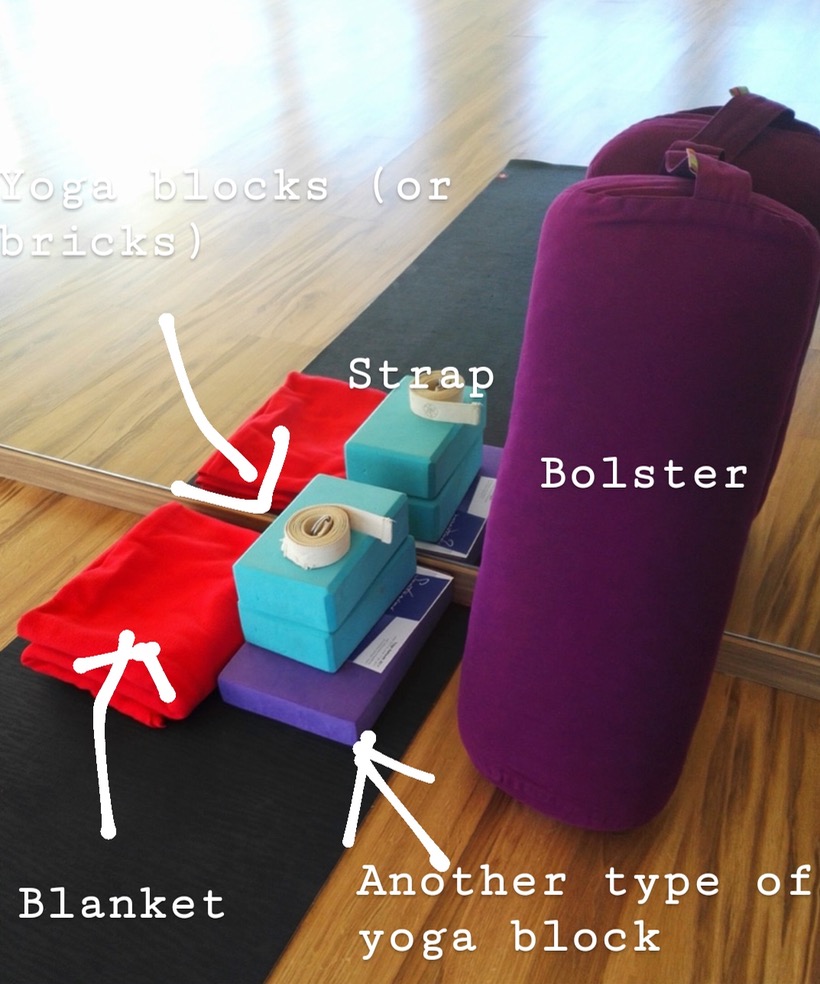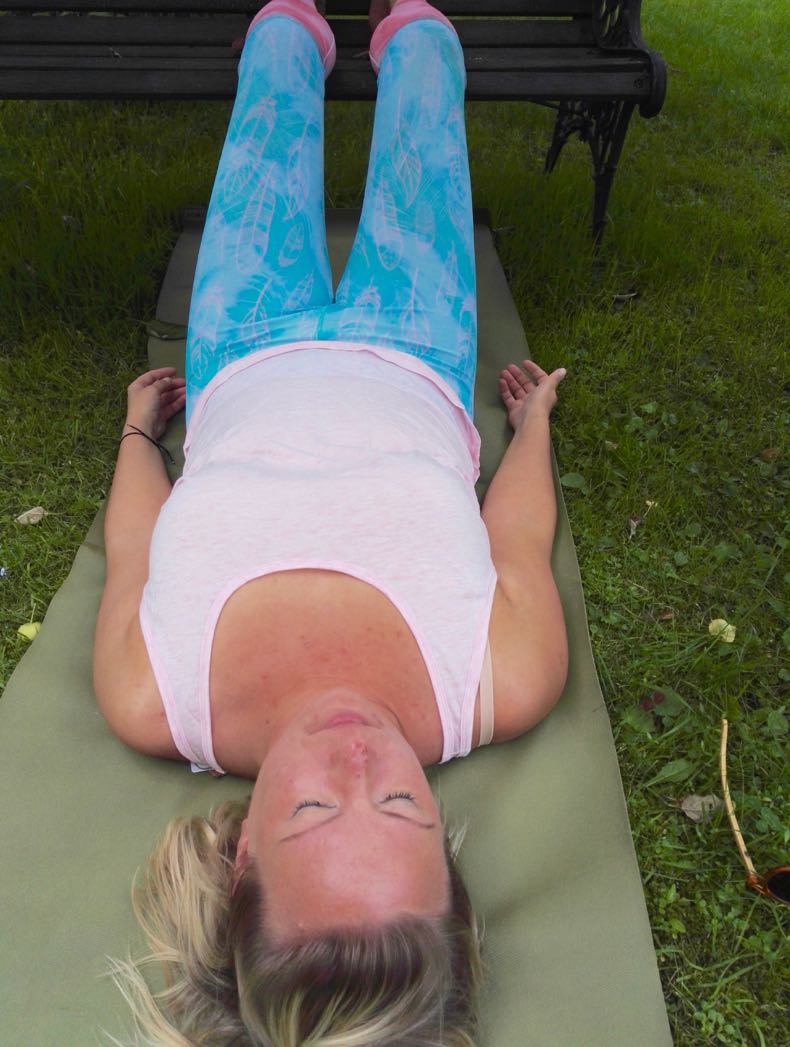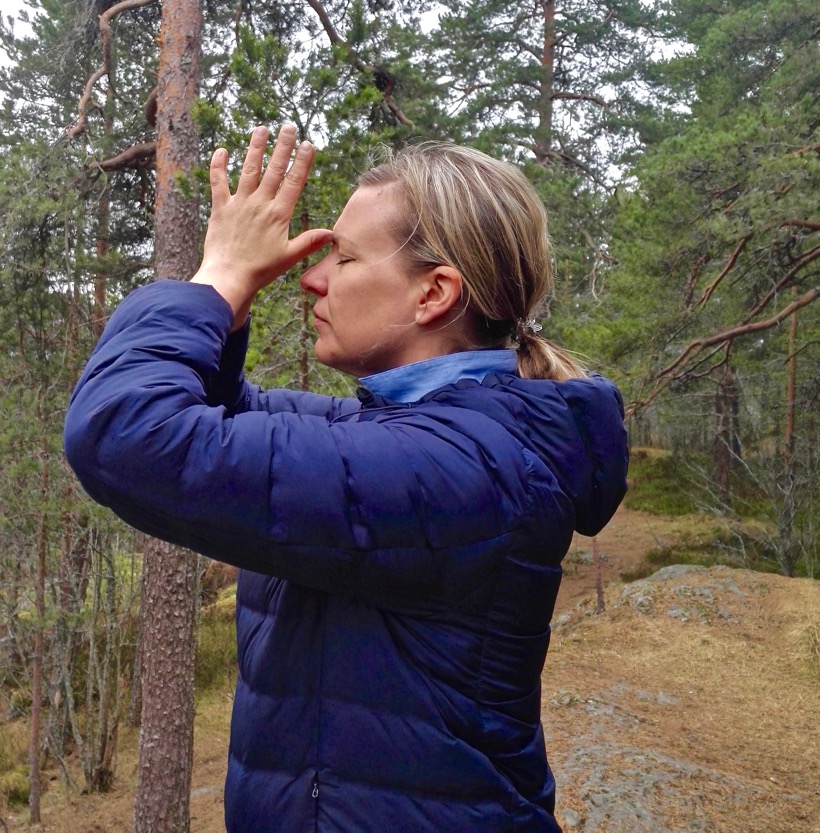Yoga terminology can be very confusing. Hand up who does not remember being new to a yoga class and at least some point wondering what on earth the teacher is talking about?
As September is kind of like January when it comes to “new life, new hobbies” mindset, I thought it would be a good idea to run through few of the most common words, phrases and wordings that you may come across in your yoga class.
Kindly note that as yoga spreads in popularity there might be some variations to the interpretation of yoga terminology. In this article I have tried to look for the most authentic/widely used one but if you have any questions/comments, leave a comment and we continue the discussion.
Props/”Take any props you might need”
Yoga props refer to the various objects that can be used to help us to get better into a particular pose, or to simply gain a better awareness for the pose by making it more accessible with the help of props. These objects include straps, bolsters, yoga blocks and wheels, blankets, chairs…
Not all yoga classes need props or make use of them, but if you are really interested in of the many ways they can be used, head to a Iyengar class – You will be served (plus Iyengar yoga is a wonderful form of yoga in general, you can read more about it here.)

OM
OM is an ancient Sanskrit letter and a sacred syllable. It is often described as the Sound of the Universe, the most elemental of vibration, a sound that attunes to the our true nature.
You can hear “Om” chanted at the start or end of the class, sometimes once, sometimes several times. It is however not present in all classes as different teachers have different styles. I sometimes hear that people can find “OM-ing” it a bit intimitating at first but trust me, nobody comes to yoga class to check out or judge your chanting voice. Just give it a go, you might like it!

Grounding/Rooting Down Through Your Feet
A confession: Until few years ago I really did not get what “rooting” meant, as in, what it REALLY meant. Was standing on my feet normally not enough? What was there more to it?
Through exploring the mountain pose (i.e. tadasana) with experienced teachers I have learned so much about using the whole surface of the feet, through big toe to the little toe to the edges of your feet and the heel. Today I would describe “rooting down” as becoming aware of the distribution of the weight in your feet, together with the feeling of the ground (mat) underneath. At the end of the day, how we stand impacts our posture so much, which in turn impacts how we feel internally and how we present ourselves to the outside world.
Who would have thought there is so much to simple action of standing?
Abdominal Breathing/Focus on Your Breath
Yoga is all about breath and specifically, about abdominal breathing. This can also be referred as belly breathing or diaphragmatic breathing. It means that we breathe using all available lung capacity, inhaling so that we feel our stomach expanding. We want to keep the inhales and the exhales more or less the same length.
I find it useful to inhale counting quietly in my head to three or four (or whatever is the suitable length at a given time) and keeping the exhale the same length. The additional benefit of this is that you cannot think anything else whilst counting so ta-daa, your focus is squarely on the breath.
There is so much more to be said about breath that I will make a separate post about it – in the mean time, check out this belly breathing video.
Vinyasa/”Take a Vinyasa”
This is a phrase you can hear a lot in yoga classes and it can get confusing for a beginner watching other doing what seems a very quick – and complicated – flowing sequence.
Translated from Sanskrit, vinyasa means “to place in a special way.” Each movement is a gradual progression from one to the next, hence the term ”vinyasa flow.” You link you breath to the movement and with practise it indeed reminds a flow. Most of the time. Sometimes, even for the most experienced practitioner it might feel anything but a flow.
Vinyasa is also used to refer a particular type of dynamic yoga class, and as a noun to refer a sequence of asanas taken as a transition between poses or two sides of poses. A chart of Surya Namaskar A that is the best illustration of what your class “take a vinyasa” can be.

“Feel the Body Melting/Surrendering to the Mat”
The best way I can put this is “just feel it, don’t think about it.” Melting/surrendering to the mat it is an encouragement to try and relax the muscles a little bit more (and there is always that little bit more), letting the thoughts go (rather than thinking all the things you are going to do after the class) and just allow yourself to be still.
Savasana
Often referred as most people’s favourite part of the practise, savasana (or “dead man’s pose” as it is called in English) is the final relaxation that comes at the end of the asana practise. Usually it is done lying down on one’s back, but variations can be keeping knees bend or having legs slightly elevated – whatever allows the practitioner to feel completely relaxed and peaceful.
It is perfectly normal to feel fidgety during savanasa. In today’s world we are not always very comfortable staying still. However do try stay in the class for the savasana and to breath through the mental discomfort – after few times you will learn to love it.

Namaste
At the end of the yoga class (but can happen in other situations too) you might hear your teacher say “Namaste”. This is usually combined with bringing our hands together in front of the chest, in the prayer position (also called “Anjali mudra, read more about that here) and bowing your head. The literal translation of “Namaste” translates simply as “I bow to you.” The more spiritual translation of Namaste comes to “The light in me greets the light in you”, representing the belief that we all share the one and Same Divine Consciousness.
Some teachers use the term ”Namaskar” which can be understood in a similar way in the context of a yoga class.
Any other yoga terminology you want to ask about or share? Please do so in the comments!



